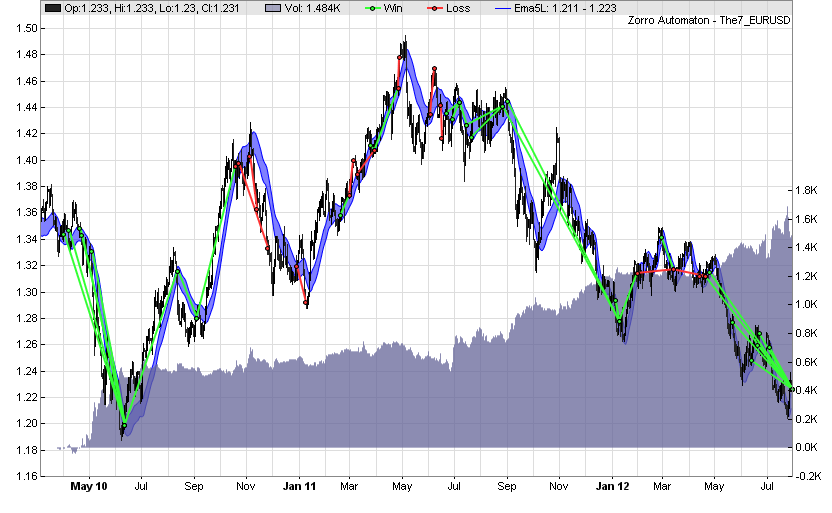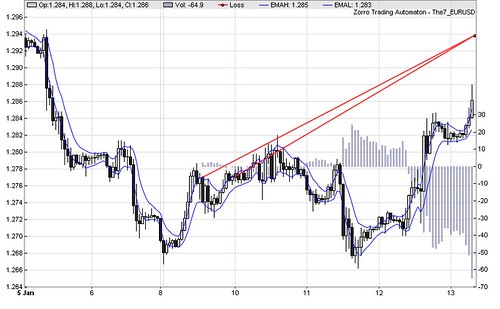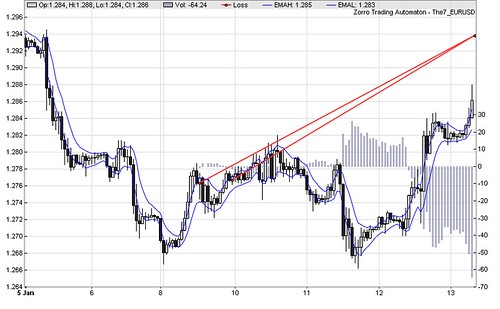Posted By: jcl

The7 strategy - 09/30/12 16:04
I just found this simple strategy on another forum, posted by someone with the name "The7". With some small modifications it was quite successful in a WFO test and gets > 7000 pips annual profit:
The performance is quite remarkable for such a simple system. Here's the equity curve on a microlot account:

Code:
function run()
{
set(TESTNOW|PLOTNOW|PARAMETERS);
NumWFOCycles = 8;
BarPeriod = 1440;
while(asset(loop("EUR/USD","AUD/USD","USD/CAD")))
{
var Period = optimize(5,3,15);
var EMA5H = LowPass(series(priceHigh()),3*Period);
var EMA5L = LowPass(series(priceLow()),3*Period);
Stop = (HH(2) - LL(2)) * optimize(1,0.5,5);
if(priceOpen() > EMA5H && priceClose() < EMA5H && priceLow() > EMA5L)
enterShort();
else if(priceOpen() < EMA5L && priceClose() > EMA5L && priceHigh() < EMA5H)
enterLong();
}
}
The performance is quite remarkable for such a simple system. Here's the equity curve on a microlot account:


